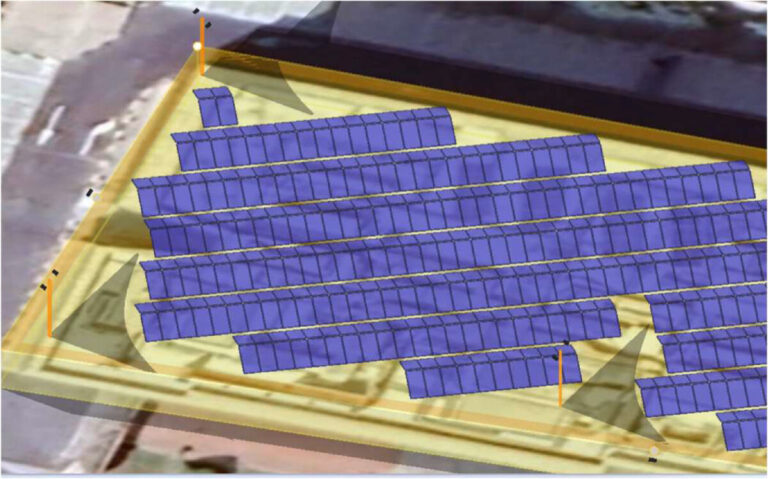Scientists in the Emirates have developed a new lightning tower layout that reportedly eliminates the shadow effect on PV panels. The proposed approach also takes into account the requirements for grounding networks under varying moisture conditions.
A group of scientists from the University of Wollongong in Dubai have proposed a new approach to deploying direct lightning protection technology in locations hosting PV systems with an east-west orientation and limited spacing between panels.
They explained that integrating direct lightning protection into these types of solar panels is difficult in terms of compliance with Earth Terminal System (ETS) requirements and direct lightning protection, especially in rooftop installations.
“The proposed method introduces equations to support the innovative approach for horizontal lightning towers and addresses the ground network requirements under varying moisture conditions,” the group said. “The article’s equations allow engineers to configure the panel layout for east and west orientations using only three sets of data, while simultaneously meeting direct lightning protection requirements.”
In the newspaper “A new lightning pole layout to eliminate shadow effects on PV panels”, published in Research into electrical energy systemsthe research group explained that conventional lightning protection solutions, such as high mast installations, can result in significant shading over the panels, and said the proposed approach allows for proper steel layout of the panels to meet lightning protection standards without any shading.
“In a scenario where solar panels are installed back to back, with one side facing east and the other west, traditional installation of lightning towers is not feasible without causing shading on the panels,” the academics said. can lead to hot spots and reduced panel efficiency. “The innovative approach involves installing horizontal lightning poles along the panel length instead of vertical ones.”
The proposed system also uses horizontal bars made of copper strips that are attached to the steel supporting structure of the panels. “This arrangement ensures that the length of the horizontal copper rod is kept short and varies depending on the length of the panel,” the academics pointed out. “These lengths are based on panels up to 600 W in the current market.”
They also warned that the selected copper tape, bar or shield wire should not sag under its own weight or heavy wind conditions and said project developers could also consider using copper-clad steel bars that meet the necessary current carrying capacity and withstand against damage from lightning strike energy. “These types of bars or bands provide high tensile strength,” they stated. “The distance between the drop guides must comply with the relevant standards and policies as set out in the reference.”
The proposed guidelines can provide adequate lightning protection against the risk of damage during storm conditions and also help reduce grounding grid costs, the research group said.
This content is copyrighted and may not be reused. If you would like to collaborate with us and reuse some of our content, please contact: editors@pv-magazine.com.


